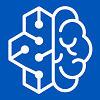The Future Internet will be characterized by a significant shift towards the Internet of Things (IoT). By 2020 there will be more than 50 billion devices connected to the Internet (sensors, smartphones, laptops, cars, clothes, etc.), communicating with each other, and through each other with other similar devices on the other end of the Internet, mostly over wireless channels and multiple hops. Most of them will be mobile, or at least unwired, and highly heterogeneous, regarding their energy supplies, processing and communication possibilities. Even if there was a lot of research in the last decade on different wireless ad hoc networks, the proposed solutions were not tailored to the needs of the IoT.
To ensure communication, first we need a proper addressing scheme. Although IPv6 has a large address space to handle an unthinkable number of nodes, and the IETF designed the 6LoWPAN architecture to compress and fragment the large IPv6 packets to fit the low capacity devices hooked on the IoT, in certain cases however it might just not be appropriate. How do we address the devices that belong to the same person, but are scattered in space (home, work, summer house, etc)? How do we address all the intelligent devices from the first floor of the building that have less than 30 minutes of remaining battery? Multicast groups could be used for that, but traditional multicasting is not scalable for such a large number of groups, as multicast addresses cannot be aggregated. Some context-aware addressing solutions should be devised thus to supplement IPv6.
Self-* capabilities (self-configuration, -management, -optimization, -healing, etc.) are also an essential requirement from any new communication scheme devised for the IoT. Nodes should discover their neighbors and their capabilities, but should also “learn” their habits on the fly. For example, when I detect Alice’s smartphone, her laptop should also be around. Multi-hop clustering and routing solutions should take that into account, predict the expected changes and plan ahead.
Also, an important concept for IoT is opportunistic networking, which builds on the assumption that network connectivity is not always guaranteed, but is not always required either. A road-side sensor measuring pollution level will just gather data, but might not be willing or able to send it over continuously to a sink node. It will wait instead until a person passes by, and carries away the data on his smartphone. Some communications are time critical, others are not, so a clustering and routing solution tailored for the IoT should take these aspects into account.
Open problems and research goals:
- the design of a new, context-aware addressing scheme for the IoT, to supplement IPv6;
- the design and evaluation of opportunistic multi-hop clustering and routing solutions for the IoT, able to learn and predict the behavior of network elements, and endowed with self-* capabilities.
Requirements:
- solid background in the area of wireless ad hoc networks
- experience in computer programming

